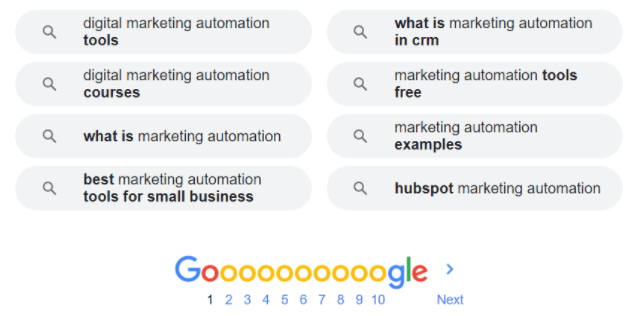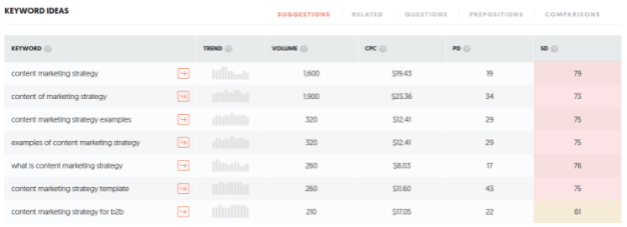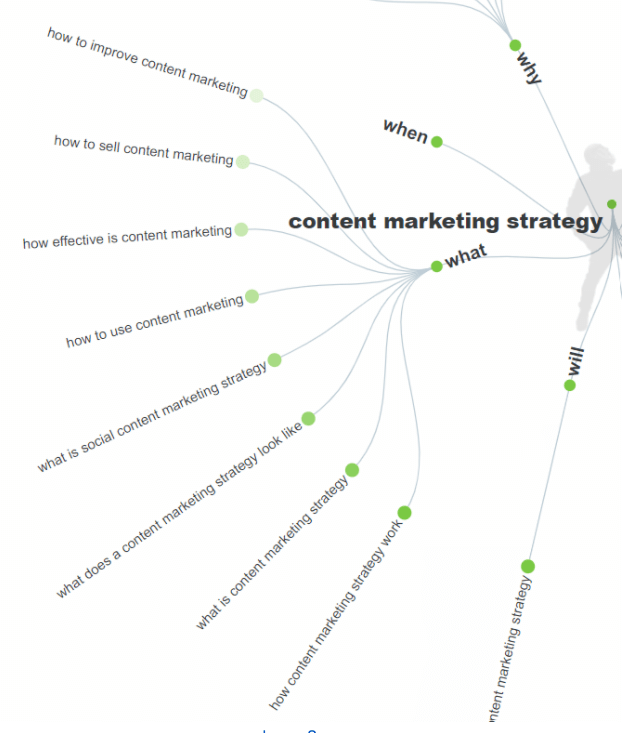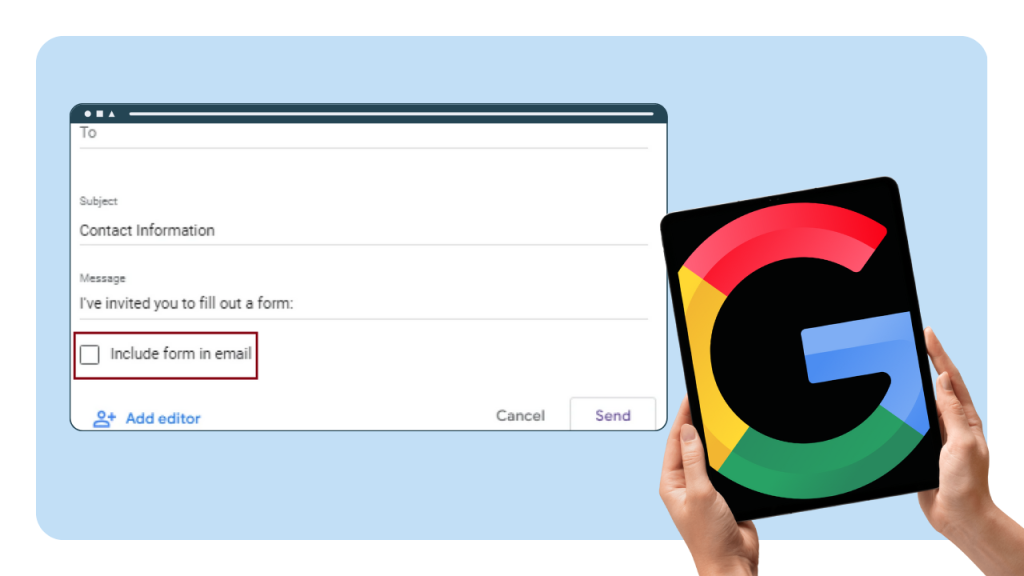Understanding how potential customers look for your brand on search engines is crucial if you want to be visible to them at the right place and at the right time.
If you know your niche well, and you are familiar with the terminology and the keywords used by your potential clients to find you, you are one step closer to converting them into paying customers, subscribers etc.
What Are Keywords Actually?
Keywords are the phrases and words individuals enter into search engines to find something they are looking for.
For example, if you want to purchase new shoes, you may enter something like “buy shoes online” into Google search. This term that you type in the search engine is called a keyword.
Now, you may think, why do you need to research keywords for your website?
Keywords are important because your site can get displayed when individuals type them into search engines. SEO (Search Engine Optimization) professionals and website owners write content around certain keywords and optimize a site as much as possible in the hopes of ranking at the top of Google’s results for certain keywords.
When your website is listed at the top search results, the keyword works as a free source of web traffic for your site.
Now, for your website to show at the top of Google for a relevant keyword, it’s important to learn how to correctly search and find keywords for your website.
In this article, we’ll discuss the ways in which you can find relevant keywords, enhance your research with various free keyword tool, filter keywords properly and eventually come up with a comprehensive yet best-fitting keyword list for your website which you can focus on.
Let’s begin, but before that, you probably know that after keyword selection, comes content creation... And this is not always that easiest. If you want to stand out, you should consider to add also interactive content to your articles. Quizzes, Surveys, Calculators and Forms can be a great way to make your content engaging and fun. If this sounds interesting, you should try out involve.me customer engagement tool. It's a no-code online funnel builder which allows you to create quiz, calculators, multi-step forms and surveys in a matter of minutes.
Try involve.me now --> It's Free! :)
Now we can start our deep dive into keyword research!
How to Conduct a SEO-Friendly Keyword Research?
Keyword research offers useful insights into the queries your potential customers are searching on Google. When your research keywords, you can find the queries you can target. You also get to know their ranking difficulty and popularity.
All in all, keyword research helps you know the topics your target audience cares about. A well made keyword research will result with a detailed list of keywords and phrases relevant to your business which can eventually drive search traffic to your website organically. The ultimate goal is to find those "pearls" - keywords which have a decent search volume, while still having low competition.
It is of utmost importance to keep in mind that your keyword research is part of a bigger SEO strategy and organic-growth plan which will have to be exceuted by you (or your team) over time. A solid SEO strategy will help you achieve those ranking you wish for on Google search result page or any other search engine relevant to you.
Just to be clear - A SEO strategy is a process of planning and executing steps designed for increasing organic search engine rankings. To research keywords for your SEO strategy, there is a step-by-step process you can follow. Following these steps will help you come with a list of terms you should target. Let’s have a look at:
1. Create a List of Relevant, Important Topics
As a first step, create a list of topics you want to rank for. For this, you need to take time to brainstorm and come up with topics based on what you know about your business. Think about these topics in terms of general buckets. Chances are, you will come up with 5-10 buckets.
Now, you may think, what’s the purpose of this step?
You will use these buckets to come up with specific keywords at a later stage in this process.
At the time of deciding the topics, think about your buyer personas. Imagine the topics they would search for so that they are able to discover your business online. For instance, if you are an organization selling marketing software, your general topic buckets will look something like this:
Lead generation
Email marketing
Inbound marketing
SEO
Marketing automation
Marketing analytics
Social media marketing
Once you find the topics, the next step you need to take is to find their monthly search volume. You can do that by using Google’s Keyword Planner which is a free tool or other paid tools such as ahrefs or SEMrush. Then, with the help of this search volume data, you can know how relevant these topics are to your potential customers and how many sub-topics you may have to create content on to get success with that topic. To know more about these sub-topics, keep reading!
2. Add Keywords Ideas to Topic Buckets
Now that you have a ready list of topic buckets, it’s time to add some keywords in the respective buckets. For this, think about some keyword phrases that your target audience may enter into Google to search for content related to the respective topic buckets.
For instance, if you are adding keywords to the social media marketing topic bucket, you may come up with types of social media marketing, social media marketing examples, and social media marketing strategy.
Don’t worry, these won’t be your final keyword phrases. You will get to narrow down these phrases later in the process.
Tip: At the time of finding keyword ideas, you can chat with your customer-facing colleagues. They will help you know the terms your customers or prospects use or the common queries they face.
Additionally you can use Google's Keyword Planner tool or other paid tools to check for keyword suggestions and for related keywords that can be included in your topic buckets. This is an easy way to get many ideas. Of course there will be some irelevant term that you'll have to exclude, but still you may get some interesting keyword ideas you haven't thought of.
3. Look for Related Search Terms
If you want to know more ways to find out the keywords people may be using to search a certain topic, you can do one this: check out the related search terms that appear when you enter and search a keyword in Google. You can find them at the bottom of Google’s results. Checking out these keywords can help you come up with new keyword ideas.

Source: Google
4. Enhance Your List Using Keyword Research Tools
Keyword research and SEO tools can help you get more keyword ideas that you have not thought of till now. Here’s a list of free (or freemium) recommended tools that you can refer to:
1. Ubersuggest
You can use Ubersuggest to research some long-tail keywords for your buckets. These are the types of keywords more specific as compared to generic terms. All you need to do is enter a term in the tool, and you will be presented with a list of long-tail keywords.
For instance, if you enter the term ‘content marketing strategy,’ here is the list of keyword ideas you’ll get:

2. Keyword Surfer
Keyword Surfer shows you keyword ideas from inside the search results of Google. To access this tool, you need to install its Chrome extension. After you do this, whenever you search a term on Google, you can see a complete list of keyword ideas.
3. Answer the Public
Answer the Public is a free keyword tool that generates long-tail keywords. It divides its suggestions into categories, such as:
Questions: How, when, which, who, will, can, what, are, where, why.
Comparisons: Versus, vs., or, and, like.
Prepositions: Near, without, to, with, is, for, can.
Alphabetical
For instance, open the tool and enter “content marketing strategy,” and you will get the following suggestions:

4. KeywordTool.io
This tool helps you get plenty of keyword ideas. Conduct a search for a term and get a lot of relevant suggestions for your keyword lists.
5. Soovle
Soovle is a free keyword research tool that provides you keyword ideas from Google, Yahoo, Bing, etc., in a single place.
All in all, when faced with the question of how to find the best keyword ideas for your website, these tools will definitely come in handy.
How Do I Find Best Keywords for My Website?
With a ready list of keywords for each topic bucket, it is now time to take steps to refine your list. This will help you find the best keywords for your website.
Here’s how you can do this:
1. Curate Keywords for Three Main Things
Understand the main factors for choosing keywords that will give results. These factors include:
Relevance
Google ranks content based on relevance. That’s why you need to pay attention to a concept called “search intent”. Search intent is the reason that drives an individual to conduct an online search.
Your content will only rank for a keyword if it meets the needs of the searchers.
Also, your aim should be to create the best resource that exists on the web for a particular query.
Volume
You may get a spot on the first page for a particular keyword, but you won’t get any traffic to your website if no one ever searches for it.
Volume is measured by “monthly search volume.” It is the number of times a specific keyword gets searched in a month (across every audience). As discussed before, you can find the monthly search volume by using Google Keyword Planner to take care of this factor.

Authority
Google gives more weight to an authoritative source. To become one, you need to enrich your website with useful, informative content and then promote it to get backlinks and earn social signals.
Keep in mind that the more authoritative websites compete for a keyword, the more difficult it gets to rank well for it. Take it also into account when selecting keywords to focus on.
2. Check if You Have Long-tail Keywords Apart from Head Terms
Firstly, let’s define both head terms and long-tail keywords in detail. Head terms are the keyword phrases that are more generic and usually shorter (typically one to three words). On the other hand, long-tail keywords are longer keyword phrases consisting of three or more words. For instance, “blogging” is a head term, and “how to write a blog post” is a long-tail keyword. With long-tail keywords, you can easily tell what people are actually looking for.
It is crucial to check if you have long-tail keywords in each bucket and not only head terms. When compared to head terms, long-tail keywords bring in more desirable traffic. Why so? This is because they are highly specific in nature. A person searching for something so specific can probably be a much more qualified searcher for your service or product.
Tip: Whenever you create a final list of keywords for your website, ensure it is a mix of head terms and long-tail keywords.
3. Check How Your Competition Ranks for These Keywords
Checking and analyzing what keywords your competitors are trying to rank for will help you evaluate your lists of keywords so far. If you find that your competitor is ranking for keywords that you have on your lists too, you can aim to improve your ranking for them. Also, if you find important terms that your competitors are not paying any attention to, you can try to rank for those keywords.
Note: Your final keyword list must have a healthy mix of the terms that will be more difficult to rank (because of competition) and the terms that are more realistic to rank for.
Now, you may wonder how to find the keywords your competitors are ranking for?
SEMrush is a paid keyword tool that lets you view the keywords your competitors rank for. Pop your competitor’s site into the tool to know the list of keywords they rank for.
4. Narrow Down Your Lists
You can use a mix of Google’s Keyword Planner and Google Trends to cut down your keyword lists.
Use Keyword Planner to get search volume and traffic estimates for different keywords you have in your lists. Use it to flag any terms on your keyword lists that have way too much or way too little search volume.
But before you omit anything, check the trend history and projections in Google Trends. Google Trends helps you check which terms are trending upwards and need your attention.
Note: For using Google’s Keyword Planner, set-up an Ads account and turn off your example ad before paying any money.
Wrapping It Up
Keyword research helps optimize your website for search. Ensure you properly execute all of these steps to get a ready list of keywords for your website that can help you focus on just the right topics. These keywords can help you get some quick wins and move towards bigger SEO goals.
In the end, remember, as your authority in search result pages increases with time, keep on adding more and more keywords to your lists.
When you have your keyword list ready, it is time to start creating amazing content! You'll have to take time and effort in order to stand out among your cometitors. Your content should be compelling enough to get people to share it and link back to it. Over time, this will help your authority increase and lead to more organic growth.
If you are looking for a way to create engaging and unique content, you are welcome to try involve.me. A no-code builder for interactive content. Build Quizzes, Forms, Landing Pages, Surveys, Calculators and much more in an easy and quick way!
Try involve.me now --> It's Free! :)





